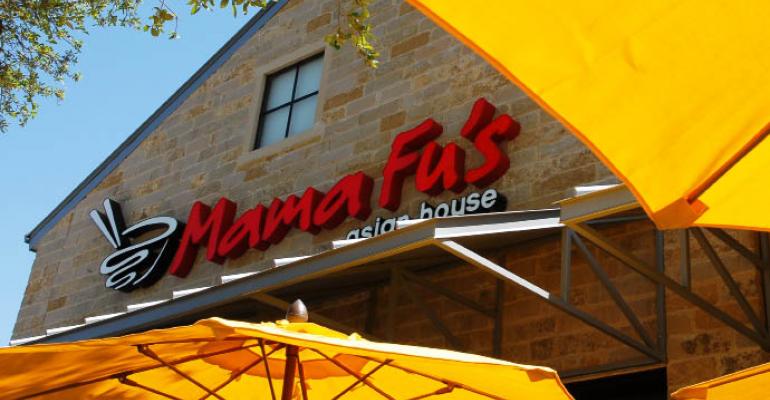The wealth of information at customers’ fingertips is both a blessing and a curse for restaurateurs. While laptops and smartphones offer new avenues for marketing, they also require operators to figure out how to stand apart in the growing online din.
Many are turning their attention to their business listings, looking for ways to optimize their appearance on search engines and social networks. Successfully bringing listings to the top of consumers’ searches, where they are more likely to be clicked, is a sort of low-hanging fruit for increasing the return on marketing investments, according to restaurateurs.
Being easily found online is particularly important for operators such as Texas Roadhouse. Although the company operates 345 casual-dining restaurants in 46 states, it shuns national TV, radio and print advertising in favor of local-store marketing, making its visibility to surfing customers crucial.
“We struggled from a search-engine-optimization standpoint, so last year we started looking at focusing on our listings and putting resources into it,” said Tyler Durham, the brand’s online marketing resources coordinator. “It’s not that we had been ignoring it, we just hadn’t taken steps necessary to make sure listings were consistent.”
The Louisville, Ky.-based chain partnered with an outside vendor to increase its online visibility with customers searching for local steaks and barbecue. The move helped to boost traffic to Texas Roadhouse’s corporate website by 40 percent compared to a year earlier, Durham said.
“That big an increase in traffic, you hope, is driving more people to your restaurant — both first-time guests and more and more repeat visitors,” he said. “It allows us to make sure, especially with new restaurants that open up, that the listing is out there and that people can find us.”
Durham said the service was integrated into the marketing budget at Texas Roadhouse for the year without any significant incremental cost. The vendor’s ability to maintain and update each individual listing as well as its distribution to more than 100 search partners “made it pretty turnkey for us,” Durham said.
The provider posted the optimized listings with search engines such as Google or Yahoo, social networks like Facebook, and local directories such as the Yellow Pages’ www.YP.com.
Mama Fu’s Asian House, a fast-casual concept owned by Austin, Texas-based Murphy Adams Restaurant Group, also is focused on optimizing its online listings. The chain handles those functions in-house.
Managing Mama Fu’s online profile in this way is “fundamentally the first thing we need to focus on when we have resources and time,” said Gary Bahl, director of marketing for the 13-unit chain.
Ensuring the chain’s information is on Google and Google Places is a top priority for a growing brand such as Mama Fu’s, which does not yet have the marketing dollars to outsource to a more comprehensive listings specialist, he said. This also requires Mama Fu’s to monitor and manage information on websites from which Google pulls search results.
“Google Places is most relevant and important because it’s obvious that the algorithm values review sites like Yelp and Trip Advisor,” Bahl said. “Google will access that information, and if you’ve optimized the content on those sites, it will pull up in the search results.
“It’s the same process for all websites: staying current and pushing new content,” he continued. “When we have things to talk about, we use social media to create new news that’s valuable to the search engines.”
Randy Murphy, chief executive of Murphy Adams, said the “worst case” for Mama Fu’s is if a customer searches for the brand and pulls up outdated information from before 2008, which is when Murphy Adams bought the chain and initiated several rebranding moves.
“If we don’t stay on some of those secondary or tertiary review sites, we’ll have a heterogeneous review popping up [in search results] with an old logo,” Murphy said. “We’re out there making sure our profile is up to date.”
To make sure customers can readily find their nearest locations, Mama Fu’s devotes time and money toward claiming its addresses in search listings through tools like Google Analytics, Murphy said.
“If we own a store at 123 Main St., let’s make sure we ‘own’ it online and lock those things down on every site where the address pops up,” he said.
Such efforts reflect a shift in marketing spending toward more local-store marketing and social media, Bahl said. The integration focus recently paid off when a social-media campaign doubled the traffic in a 30-day period to Mama Fu’s relaunched website, which includes a link straight to Google Maps from its location finder, he added.
Texas Roadhouse also assimilates its listings into online maps and GPS services. A crucial feature baked into the chain’s optimized listings is a geotag that includes a precise latitude and longitude to accurately place each restaurant’s location on a search tool like Google Maps or location-based social networks like Foursquare, Durham said. That’s especially helpful since inaccurate or out-of-date listings could lead potential customers astray when a Texas Roadhouse isn’t visible from the road.
“We like to be in the suburbs and seen from the highway, and we always love to have a pole sign with a neon logo,” Durham said, “but there are locations of ours hidden behind hotels or that can’t have the neon sign because of city regulations. Having that geotag ensures us that consumers are going to find our listing and find our restaurant. GPS units in your car are often six months behind, so if we have a unit that just opened up, it won’t be on there. Nobody updates those [devices] either, anyway.”
Contact Mark Brandau at [email protected] .





